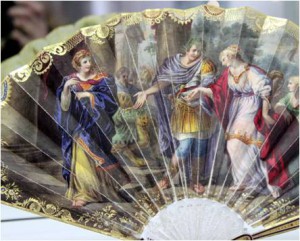 Sit back and enjoy photos of beautiful or interesting fans made between 1770 and 1815. Occasionally a plot bunny hops in, inspiring you to make use of fans in your Regency Novel.
Sit back and enjoy photos of beautiful or interesting fans made between 1770 and 1815. Occasionally a plot bunny hops in, inspiring you to make use of fans in your Regency Novel.
You can click on each photo to enlarge it. Continue reading
 Sit back and enjoy photos of beautiful or interesting fans made between 1770 and 1815. Occasionally a plot bunny hops in, inspiring you to make use of fans in your Regency Novel.
Sit back and enjoy photos of beautiful or interesting fans made between 1770 and 1815. Occasionally a plot bunny hops in, inspiring you to make use of fans in your Regency Novel.
You can click on each photo to enlarge it. Continue reading

When 18th century-people wore clothes that were called “undress”, it did not mean anything … incident. “Undress” was the word for informal fashion, something worn at home. However, “undress” in the time of Jane Austen was much more formal than today’s informal fashion is. The famous “banyan” – a morning gown for men – cannot be compared to a convenient jogging suit or a bathrobe. The banyan was an exquisite piece for gentlemen, proving their taste and wealth. It was perfectly fine for a host to receive friends and business partners when wearing a banyan.
Continue reading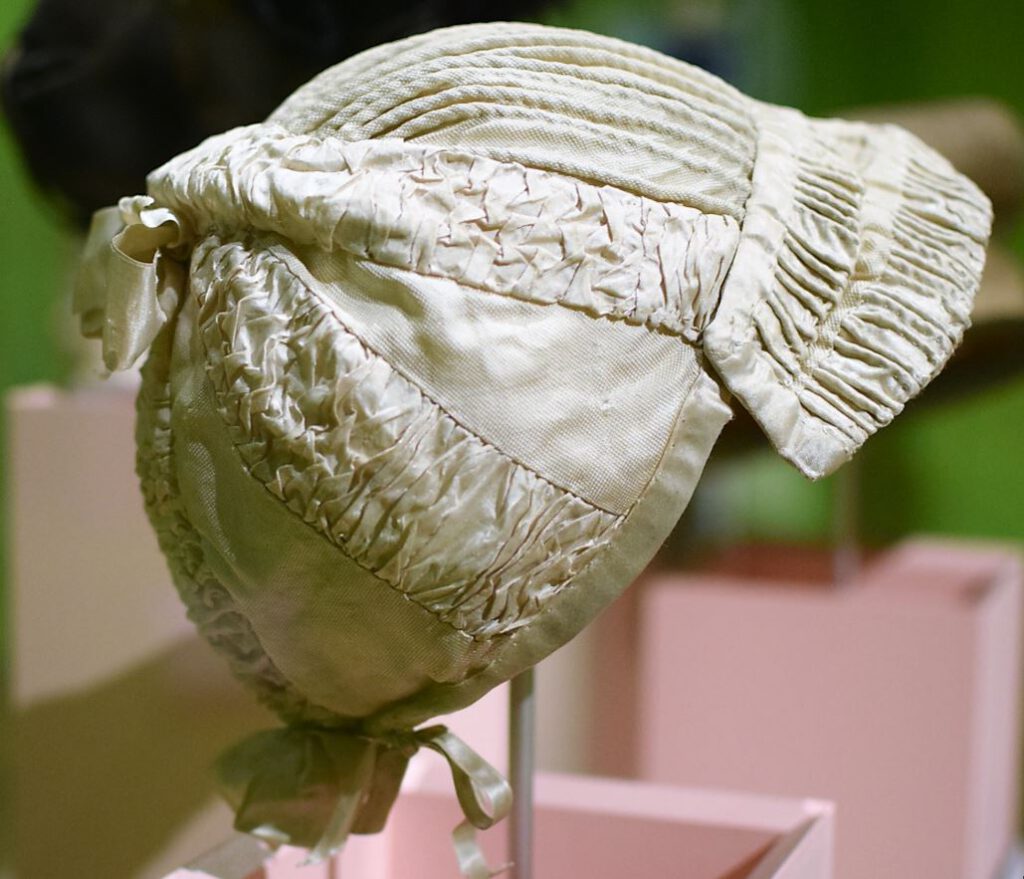
A new form of hat vied for ladies’ favour around the turn of the 19th century: the capote. The soft, cap-like hat was first created around the late 1790ies. By 1804, the capote was quite commonly worn by women and girls. It enjoyed popularity until about 1815.
Continue reading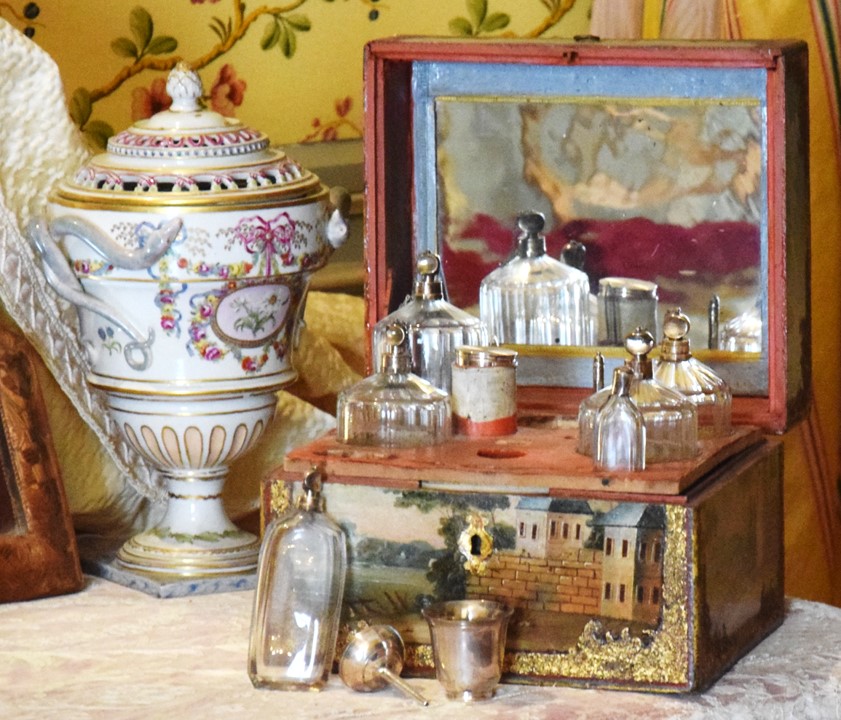
France, center of fashion for all matters of beautiful living! In the 1. half of the 18th century, the court indulges in heavy scents. Perfume is a fashion statement as well as a necessity: scents are used to protect oneself from bad, contagious smells, and they are also a symbol of social power. But progress in medical knowledge leads to a new view on scents, and with this, new fragrances become fashionable. This so-called olfactory revolution is eagerly adopted by British noblemen and -women on their Grand Tour of the Continent …
Continue reading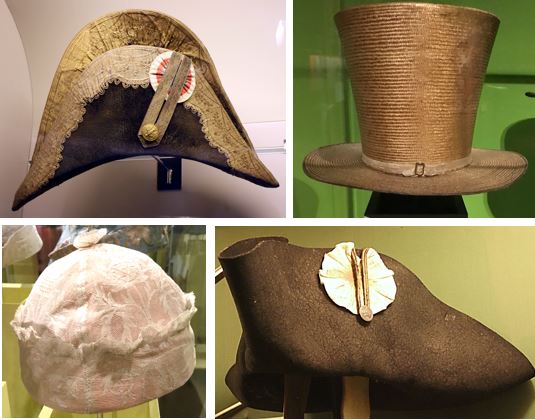
Dear time travelling gentleman on the way to the 18th century, please make sure to take with you one thing: a hat!
In the 18th century, a hat is not only useful in bad weather, and it is more than a fashion accessory. A hat indicates your role in society. Without a hat you are a nobody.
Follow me to a brief introduction to the history of 18th century hats. We make sure you pick the correct one for each period, and we also find out about hat etiquette.
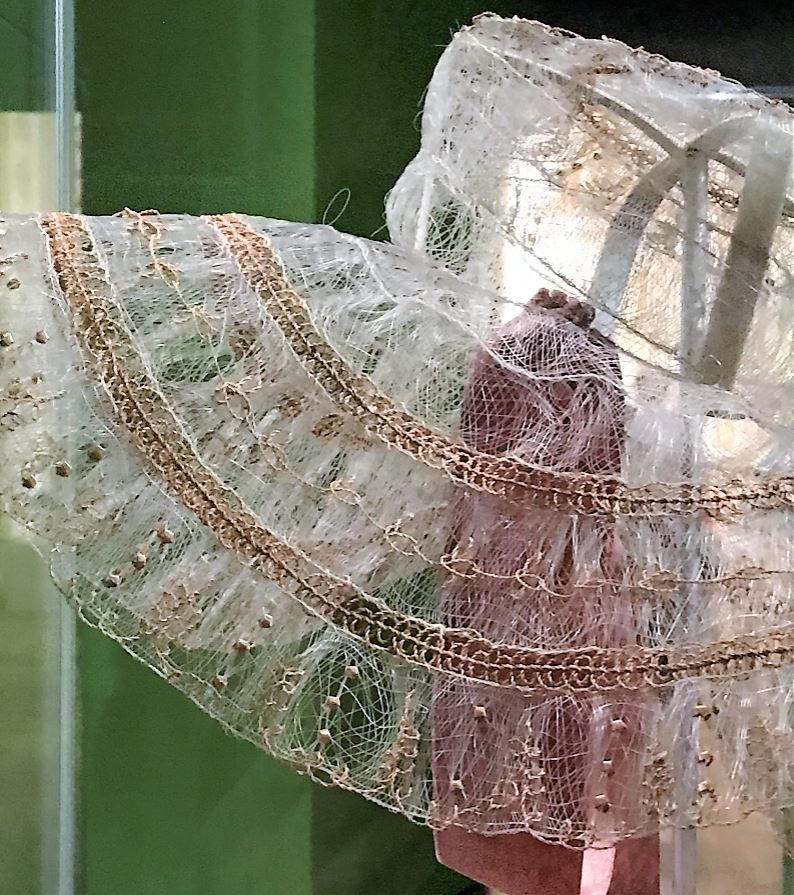
During the Regency period, horses seemed to be everywhere: They were indispensable partners for work, transportation, warfare, sport – and even for lifestyle and fashion. Horsehair from manes and tails was used for brushes, wigs and string instruments, and it was proceeded into haircloth. Haircloth was a great fabric for upholstery or for stiffening crinolines and the front panels of a suit. All these usages relied on the robustness of the material. But did you know that delicate ladies’ hats were made of horsehair, too?
Continue reading
For a young lady few things would be more satisfying than being a sought-after dancing partner at a glamourous ball. But if she was in constant demand, how would she keep track of the partners engaging her for the waltz or the cotillion later in the evening? And how would a gentleman secure a dance with her?
Keeping track of the gentlemen who had promised a dance in the course of the evening was done – on the Continent – with the assistance of a so called ‘carnet de bal‘ (a dance card). A gentleman would ask a lady to write down his name on the card a for a specific dance. These small and often precious carnets de bal were very popular in France and Austria throughout the 18th century.
In Britain, the dance card became fashionable at around the turn of the 18th century. The carnet de bal initially was often less elaborate than the Continental model.

Hairnets were popular for hairdressing in various historical periods. Today, we most often associate them with the ornate hairstyles of the Tudor period. Did you know that the hairnet became fashionable for a couple of years during the Regency period?
Continue reading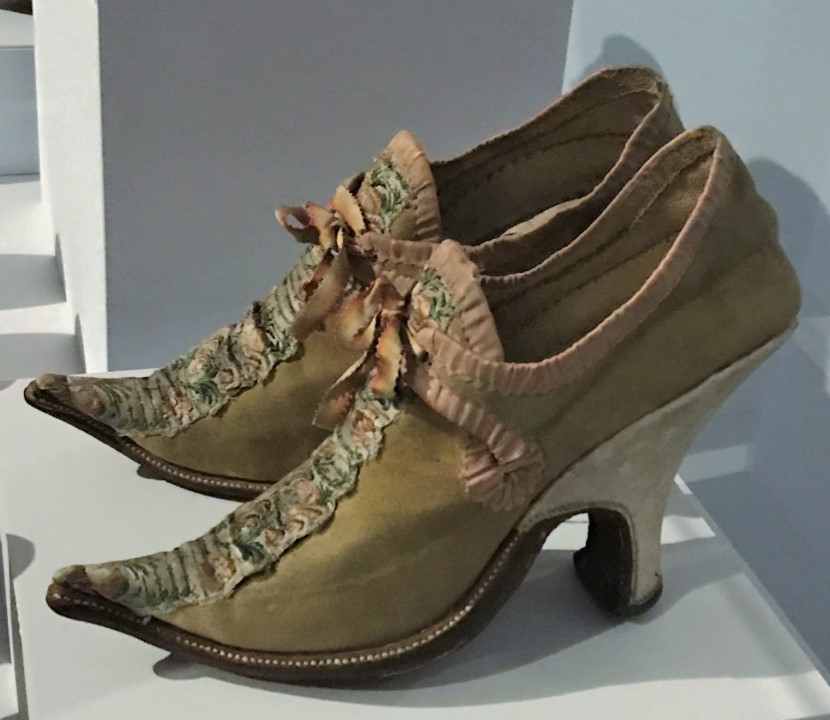 At first glance, 18th century shoes aren’t very different from today’s shoes – though they are, of course, more delicate and ornate. At a closer look however, many features of shoes we take for granted today were invented only after 1830. Enjoy some amazing facts about shoes, shoemaking, and photos of lovely shoes.
At first glance, 18th century shoes aren’t very different from today’s shoes – though they are, of course, more delicate and ornate. At a closer look however, many features of shoes we take for granted today were invented only after 1830. Enjoy some amazing facts about shoes, shoemaking, and photos of lovely shoes.
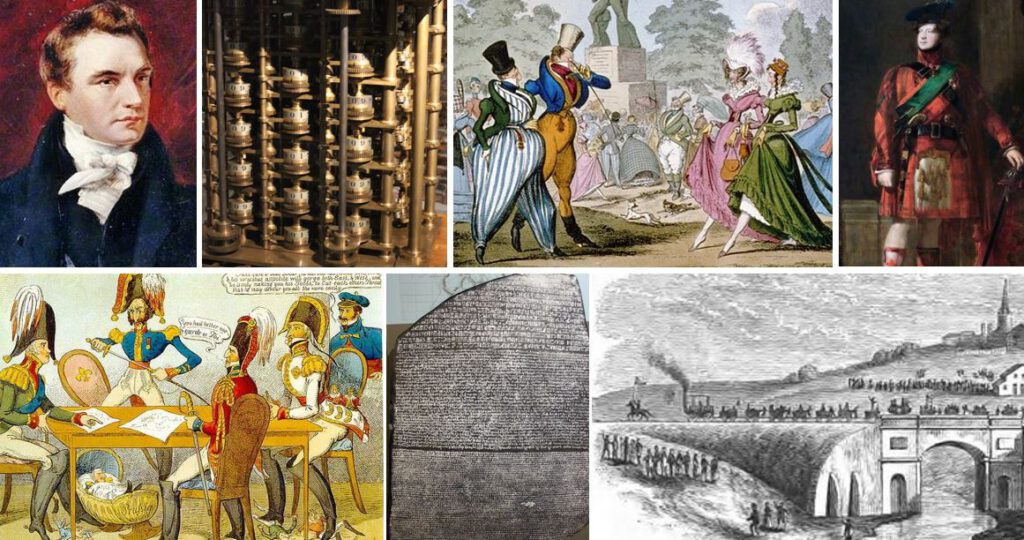 In 1822, Britain leaves the recession of the post-war period. The Napoleonic Wars had cost the nation an estimated £83 billion in modern terms – it is the most expensive war so far. The country’s debt is almost 200% of its GDP in 1822; this, however, is already better than in 1819, when the debt peaked at around 260 percent of the GDP.
In 1822, Britain leaves the recession of the post-war period. The Napoleonic Wars had cost the nation an estimated £83 billion in modern terms – it is the most expensive war so far. The country’s debt is almost 200% of its GDP in 1822; this, however, is already better than in 1819, when the debt peaked at around 260 percent of the GDP.
Government deficits are financed either by short‐term Exchequer Bills, or by long‐term financing as perpetual bonds, with annual interest rates about 5, respectively 3, percent. This system of financing brings important benefits: With the return of peace, their prices would rise, adding to the bondholders’ wealth in this way. This money then provides much of the finance underpinning for the “take‐off ”-stage of the Industrial Revolution.
Economic grows begins to pick up pace. The general price level falls. Additionally, reforms for free trade start. Britain sees some prosperity.
Find out more about innovations, fashion, celebrities, and social news of this exiting year in England. Continue reading